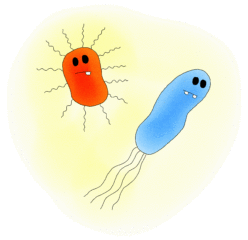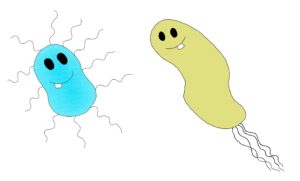How big are bacteria?
Bacteria are single-cell organisms that are microscopically small. Typically they are just a few micrometers in length. That means that individual cells can only be seen with a microscope. To give you a better understanding of how small bacteria are, let us start with a housefly. Because you know for sure how big a housefly is.
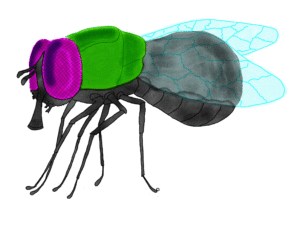
If we now zoom to one of the legs of the fly, you will see a white speck attached to its leg. This is a grain of powdered sugar.
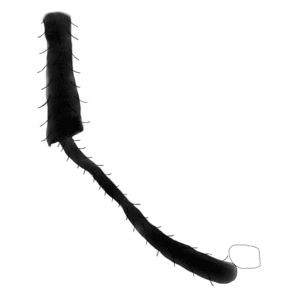
Let’s zoom in further. Can you see the small blue dot on the sugar grain? That’s a bacterium.
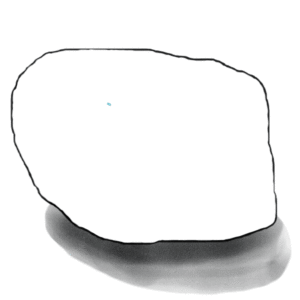
Let’s say hello to the little guy.
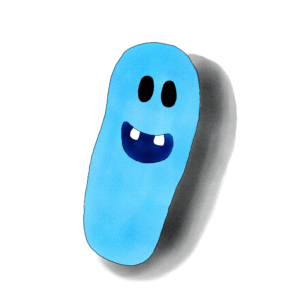 Hello!
Hello!
More facts about Bacteria
Bacteria come in different shapes such as rods, spheres, and spirals. They can come as singles or stick together with others of the same or even different kind. Some bacteria are immobile, while others can move very fast with so-called flagella. Bacteria increase their numbers by merely dividing themselves into two. Some of them divide themselves very fast. Under the right conditions in a laboratory, one bacterium, called E. coli, for example, can turn into two in just 15 minutes.
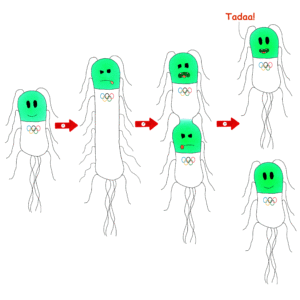
Others may take a couple of hours or even days. Some bacteria can also fall into a sort of long sleep. They can transform into so-called spores. As spores, they can survive for many years under adverse living conditions. When the living conditions improve the spores turn into active cells again.
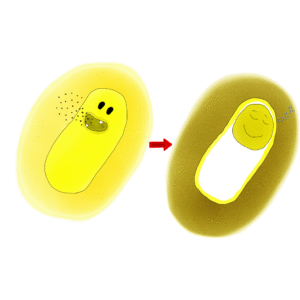
I can’t even see them – So, why are they important to us?
Bacteria are among the oldest living organisms on our planet. They live in almost all areas of the earth. They inhabit soil and water and can even be found in the air. Many of them also live in and on plants and animals as well as humans. Why does that matter to us?
Because they play an important role in the well-being of our planet and ourselves. Good bacteria in the soil and water eat up waste, harmful debris, and chemicals transforming poisonous substances into harmless materials over time. Thus, they help nature to heal itself. They also help break down dead plants, leaves, and animals and turn them into fertile soil needed by plants to grow. Some of these little helpers also bring nitrogen, a powerful fertilizer, from the air into the soil.
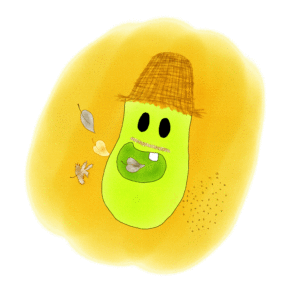
Other types of good bacteria help us make certain foods such as Sauerkraut, Salami, yogurt, cheese, vinegar, and ketchup. We even can transform some kinds of bacteria, such as E. coli, to produce medicine and other useful things for us.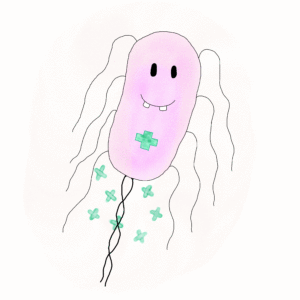
Also bacteria in your gut help you digest your food. Other ones on your skin and in your mouth and gut help you to fight off harmful bacteria by preventing them from growing. Which brings me to…
The bad Bacteria
Oh yes. There are also bad ones that are harmful to us, or animals, or plants. However, keep in mind that the good ones by far outnumber the germs that can harm us. Bad bacteria can destroy your teeth and make your breath and body smell terrible.
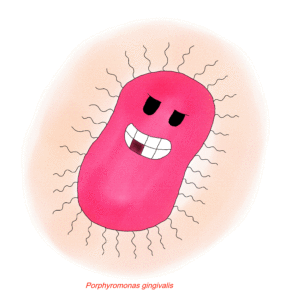
They can make your belly ache, and you vomit.
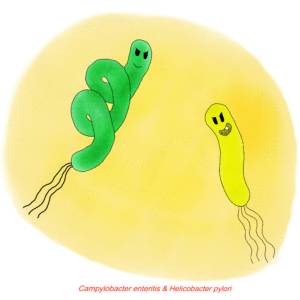
They can make you cough and sneeze and have a sore throat and ear pains.
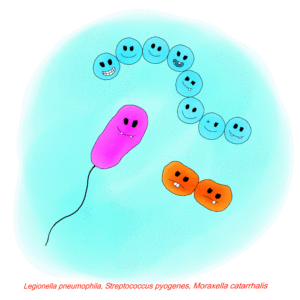
They can also give you a headache, or make you seriously ill.
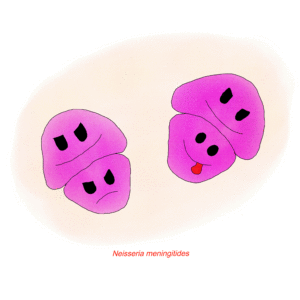
However, the good news is that we have some very good means to fight off these germs. There are some defense systems our body produces naturally. There are some measures we all can easily take to prevent these critters from harming us, and finally, there is modern medicine, which allows us to effectively deal with them. To find out how you can handle germs naturally or with the help of medical intervention push the little critters below.
